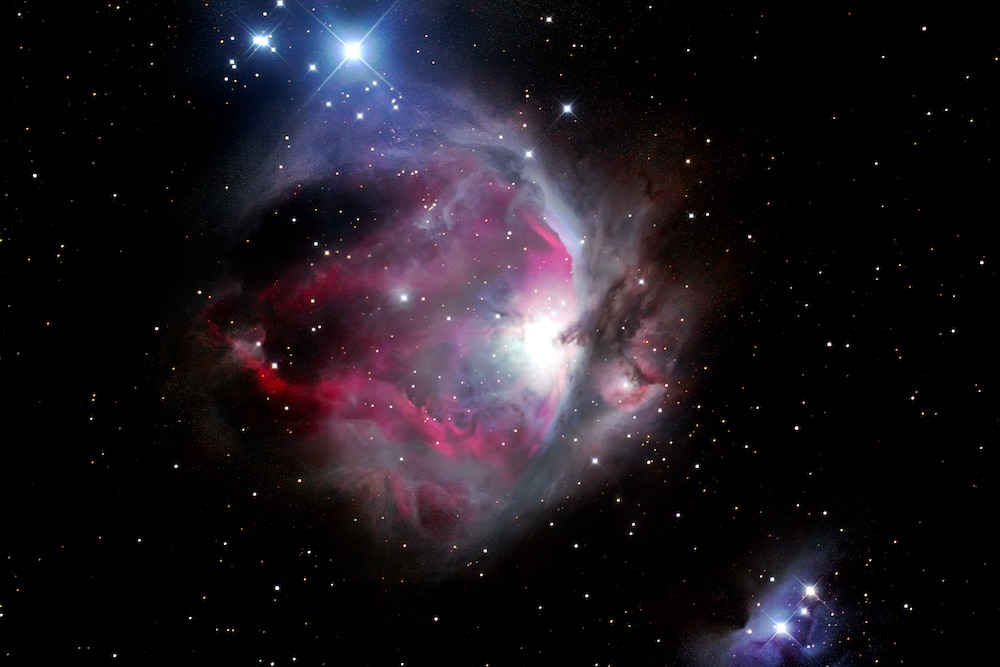Create a free profile to get unlimited access to exclusive videos, sweepstakes, and more!
Star trespassing on another star’s territory might tell us what happened in the early solar system
A star went way up in brightness after colliding with a protoplanetary disc, and now it won't go away.

It’s usually mega-stars that cause all the fireworks, but one relatively tiny star does much more than twinkle from 1,500 light years away.
Something is trespassing on a cloud of star stuff in the Orion Nebula. That something is a star that wasn’t much to look at until it became 250 times brighter in 1936. FU Ori never dimmed since. Back then, we didn’t have the technology to investigate why this infamous star was consuming everything around it. Now we know that FU Ori became so intensely bright after crashing into a protoplanetary disc, and continues to steal its gas and dust.
While it is ironic that such a small star got so lit while the much larger star at the center of the disc was hardly affected, the size of a star doesn’t matter when that star is the one disturbing a disc of dust, gas, and forming objects that is much like the one which gave birth to our solar system. Researcher Elisabeth Borchert of Monash University in Australia, who led a study soon to be published in MNRAS, found out how FU Ori became so bright by trespassing.
“The star captures material in the disc while it is passing through, leading to a sudden jump in the mass accretion rate of the star and following that the brightness,” she told SYFY WIRE. “The disturbing star experiences the outburst, regardless of it being the lighter or heavier star.”
When Borchert and her research team ran initial simulations, they wanted to see whether the same thing would happen if it was the larger star that was the trespasser and the smaller one minding its own business in the nucleus of the disc. Sure enough, the simulations showed that if the more massive star had been causing the disturbance, it would also have experienced a dazzling outburst like FU Ori. Whichever star is in the middle of the disc only levels up in brightness slightly as the part of the disc that has been disturbed moves inward.
Unfortunately, nothing is really known about what was going on with FU Ori pre-outburst except that it wasn’t nearly as bright as it became when it collided with the protoplanetary disc. What is suspicious about this kind of behavior is that FU Ori and the two stars that were first observed running into discs after it (V1057 Cyg and V1515 Cyg in the constellation Cygnus) were all relatively young stars with eerily similar properties. Now 10 stars, thought to be much like the nascent Sun, are known to have gone through what is known as an FU Orionis phenomenon.
“This phenomenon really drives the disc’s heat up,” said Borchert. “We see temperatures in the disc driven up to above 2,240 degrees Fahrenheit. In individual particles in the disc though, temperatures can go above 6,740 degrees. This should melt the dust in those places.”
Disturbances by a star while the solar system was still forming could explain why a lot of the dust in the early solar system melted so rapidly. Dust on rocky bodies such as planets, moons, and meteorites can also melt because of impacts (like glass on the Moon). It depends how much heat is generated and whether that exceeds the melting point of the substance it comes into contact with. There is no way to tell whether the melt on an object was caused by an impact or disturbance, but Borchert thinks the possibility of an invading star is there.
“Another study showed that the outer part of the solar system was shaped by a close flyby, so flash heating resulting from it could have resulted in the creation of chondrules, but this doesn't leave out the chance for impacts contributing as well,” she said.
FU Ori will continue to blaze, even if most of its light comes from stolen stardust.


























